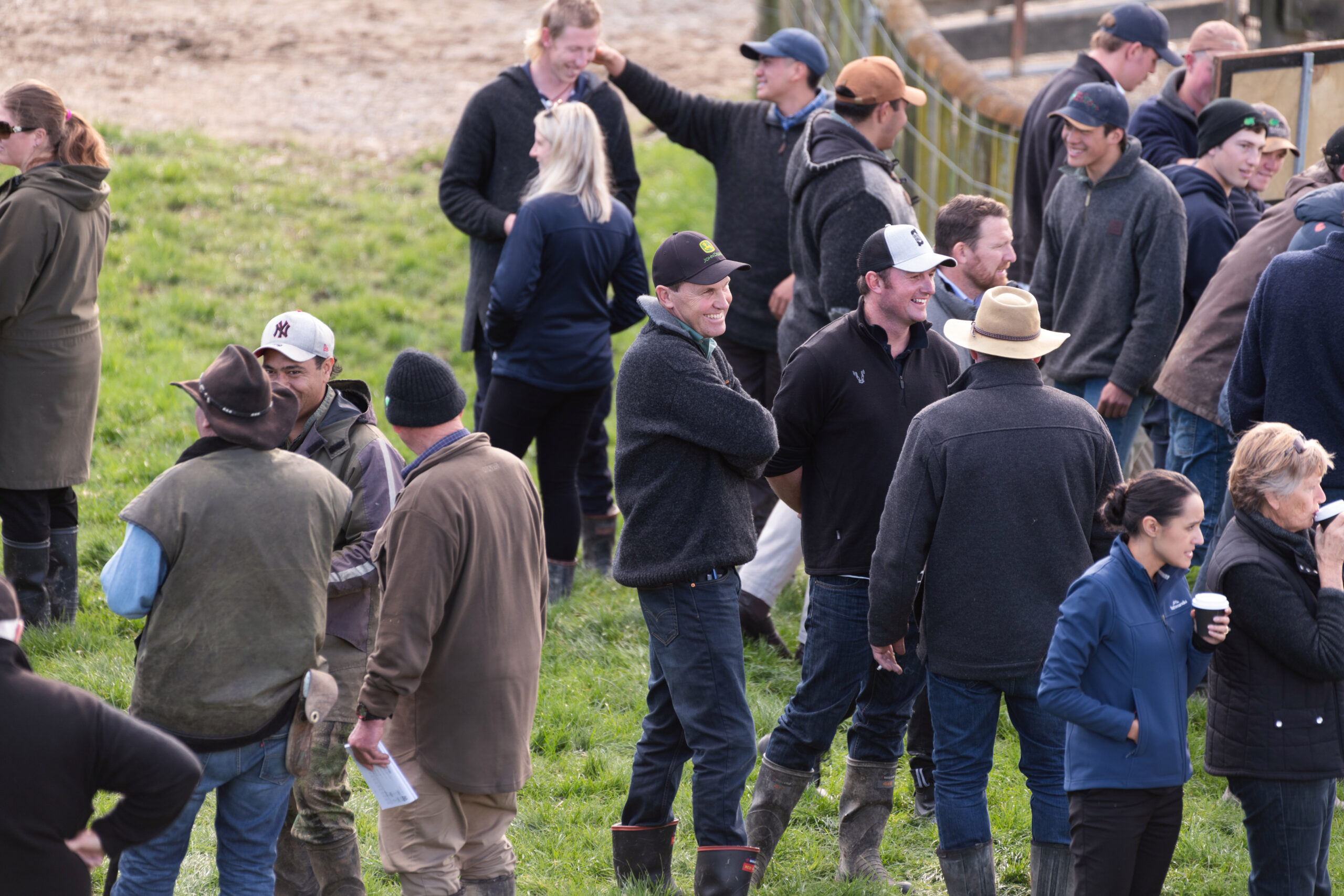
MATAURI
ANGUS
FOR BETTER BALANCED BEEF
Breeder Profile:
James Parsons and Travis & Kirra Pymm
Words by
Natalie Campbell
New Matauri Angus Owners Relishing Breeding Proven Hard Hill Country Genetics
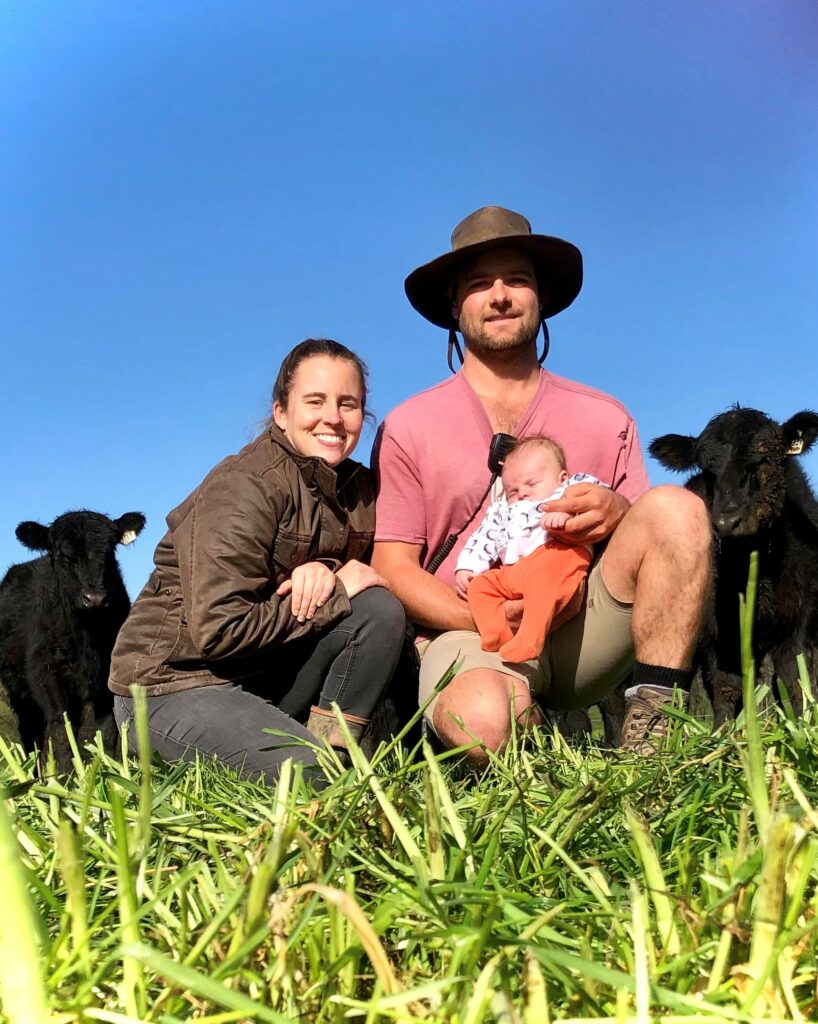
A trip to New Zealand five years ago has turned a dream into reality for American natives Travis and Kirra Pymm, who are living their career and lifestyle dream on coastal Northland hill country.
The Pymms are farm managers and business partners with the Parsons family under the Ashgrove Genetics umbrella, recently rebranded and now trading as Hard Hill Country Genetics.Com – and now home to the iconic Matauri Angus Stud.
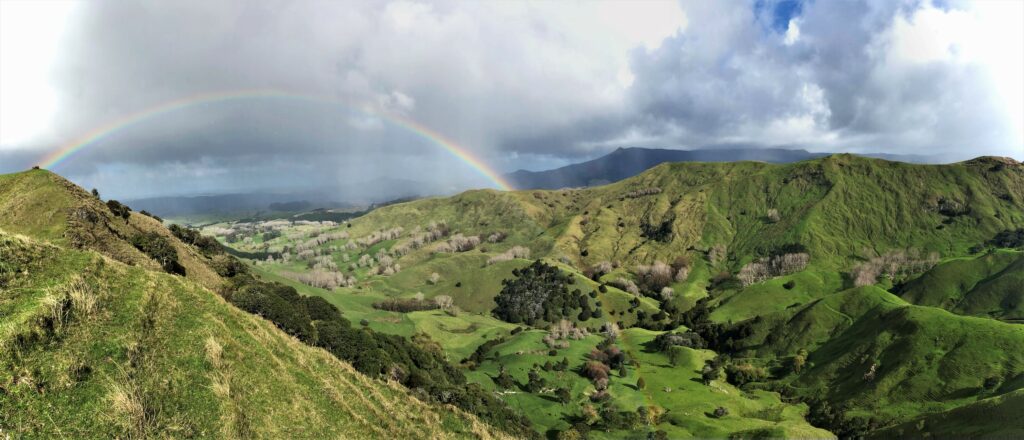
Travis says it’s been a busy but exciting five years – relocating to New Zealand, becoming business partners and starting a family.
Originally from California the couple had plans to permanently relocate to Oregon where they had spent time working on a 4046ha (10,000 acre) ranch, but they opted to travel to the Southern Hemisphere prior to settling down. Their itinerary included a visit to Australia, but the couple didn’t make it there, falling in love with Northland and deciding to call New Zealand home.
They secured a job managing a dry stock farm, not far from the Matauri herd, before joining the Parsons in 2020.
While in his job prior to joining the Parsons Travis was a Matauri Angus client purchasing sires from Colin Maxwell so was aware he was looking to retire from Angus breeding.
Then the role with the Parsons’ arose.
“I was going to apply for the job, learn more about genetics and then buy some of my own cows and start a stud later on,“ recalls Travis.
However, not long after he started with Hard Hill Country Genetics.Com, the decision to purchase the Matauri Stud was made with the transfer completed in 2020. At around the same time and just six months after joining the business, Travis and Kirra agreed to become business partners.
James Parsons says the business has a philosophy of partnering with good people and who are headed in the same direction.

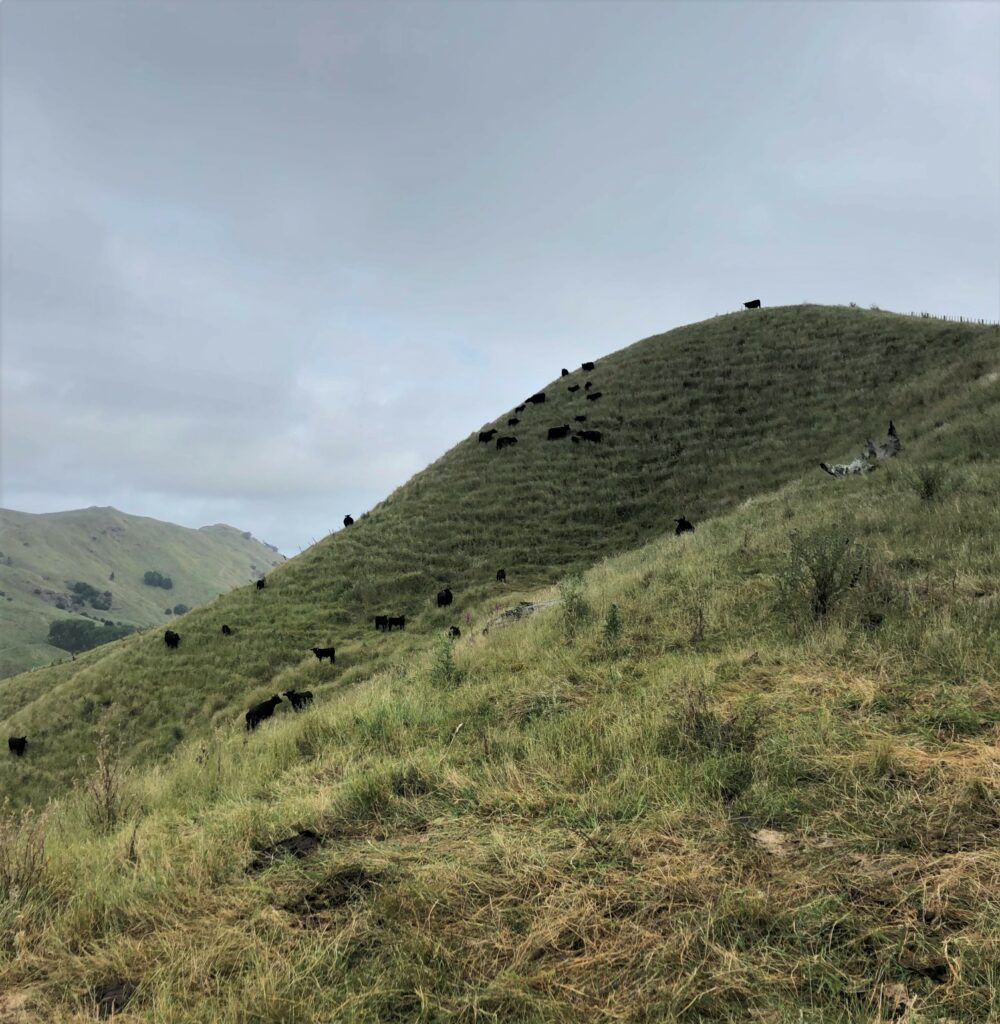
“If we are going to be serious about breeding top stud animals we wanted someone in charge day to day, who has skin in the game and is committed for the long haul. We share similar values, so Travis and Kirra are a great fit” –
The Matauri Stud was also a good fit with the existing business.
“They are high performing genetics and are really well regarded. We talked to a lot of people and knew the cattle were performing well for clients on challenging hill country so that gave us a lot of confidence to make the purchase,” says James.
“It was an opportunity to take on a well-regarded stud and our steep to overhanging hills are a wonderful environment to test genetics.”
The new home of the Matauri herd is located between Dargaville and Kaikohe on 600ha of which 535ha is effective. It’s class 6-7 hard hill country. Of the property 90% is uncultivatable with the remainder flat to rolling hills.
“It’s not an easy farm,” says Travis.
“We’re farming really hard hill country, many breeders would say we probably shouldn’t have stud cattle, but the property and our management makes it a real testing ground and we know these genetics can cope on the hills, as Colin Maxwell farmed and ran the cows on some tough country before us.”
The farm is carrying 200 registered Angus cows, as well as heifer replacements, 350 registered and fully recorded Coopworth ewes 100 Suftex ewes and 300 commercial Coopworths mated to a terminal sire. Between 20-30 yearling bulls are offered for sale as well as 55 two-year-old bulls annually.
The ratio is now 60:40 sheep to cattle, a recent change in ratio with the purchase of the stud herd. Travis says commercial breeding ewe numbers have been reduced to accommodate the stud cows.
The sheep enterprise consists of stud and commercial flocks with Travis’ time split between both in terms of performance and trait recording.
“The commercial flock is further down the priority list and very easy care, but still performs well.”
When it comes to the breeding philosophy of the Angus herd, Travis says they plan to follow in Colin Maxwell’s footsteps.
“We brought the stud because we liked it and where it was heading.”
James agreed saying the breeding principals aligned between Matauri and their existing enterprise.
That encompasses females of a moderate size, high fertility and calving ease and good growth traits.
Travis says sound structure and temperament are also paramount.
“No one has time for broken down stock or a poor tempered animal.”
“We’re recording for every trait we can and will grow those as different ones become available.”
Travis and James agree that phenotype and structural soundness rank above EBVs in importance within their programme, but they believe it’s the balance of those three elements, with minimal compromise, that they consider to be art of cattle breeding.
However, when it comes to EBVs the Pymms and Parsons record everything they can, from birth weight right through to 600-day weights. Eye muscle scanning is done and scrotal circumference (SC) is also recorded.
Travis says SC has a direct correlation to female fertility and early maturing heifers.

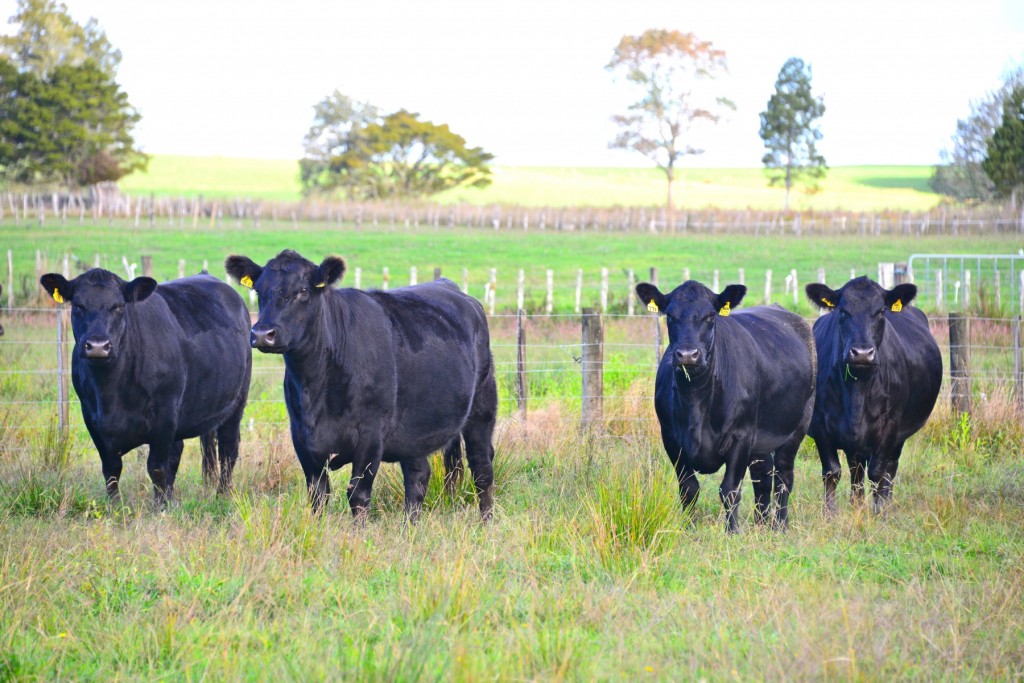
“That’s important to us just for flexibility within our breeding business. If we have a tough season the females need to get in calf as yearling heifers, even if they are lighter than what might be considered acceptable.”
This also applies to calving ease. “If first calving heifers struggle to get up to weight due to a tough environment, we still expect them to calve without trouble. These are basic commercial philosophies that we believe and select for and test in our cattle,” says Travis.
They also value the highly heritable traits of SC, BW, GL, and fat covers, the most heritable maternal traits.
“We select for those over traits like days to calving purely for their heritability when selecting unproven sires,” says Travis.
Carcass traits are also measured.
James says eating quality is another significant focus for the business.
“Maintaining good IMF and carcass traits is important to us.”
Travis says in New Zealand’s grass-based beef farming systems beef cattle are required to grow fast and get up to weight quickly, from a moderately framed cow.
“It’s not necessarily environmentally good to have a heavy cow on steep hills, so we need the progeny from our moderate cows to grow fast and reach 300kgCW as quickly as possible.”
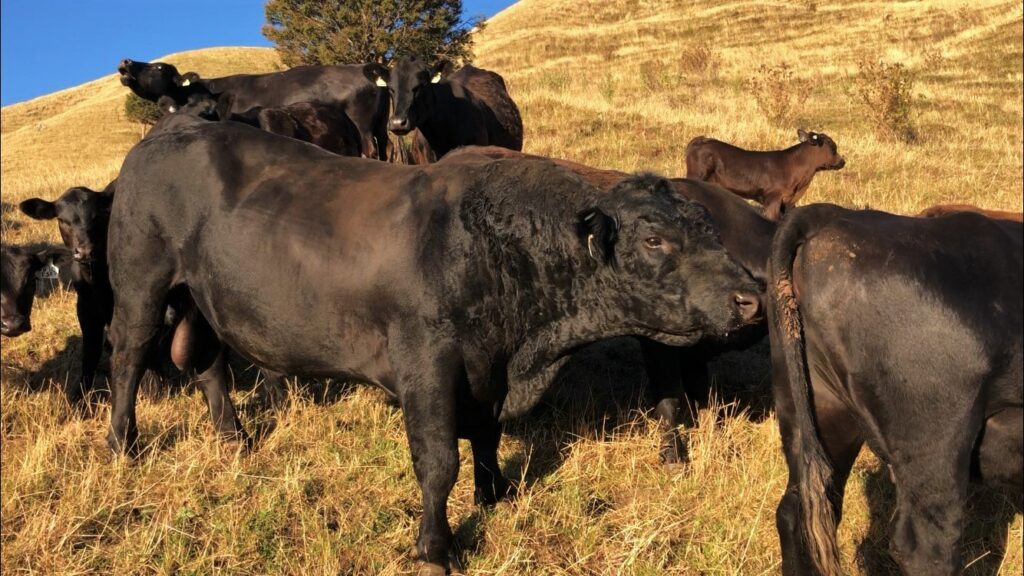

Above all else, Travis says they value structure and soundness on their hard hill country.
“The cattle need to be able to climb and not suffer from feet issues.”
The far-reaching influence Matauri genetics have had in NZ Angus herds means sourcing a bull for in-herd use can be challenging with many Angus pedigrees on home shores tracing back to Matauri genetics.
That’s taken the search for sires for in herd use, off shore. Four AI sires have been sourced and used this mating season – two from America and two from Australia.
When selecting a herd sire, Travis says structure comes first followed by a strong EBV package.
“We select animals for the traits we value, such as scrotal circumference, calving ease, gestation length closely followed by growth and we select to see it in the females.”
The AI programme is carried out by CRV Ambreed with 100 cows inseminated on average, however Travis says they have plans to reduce that in coming years.
Last season’s AI programme was followed up with a bull from Stockman Angus near Rotorua.
Heifers are mated and calve as two-year-olds with the strict criteria of conceiving within two cycles – a principal also applied to the cows.
A two-cycle mating helps with management with a reduced calving window but also allows the females to return and get back in calf sooner.
With a focus on breeding, he says the business doesn’t have much flexibility, in terms of relief valves if the pressure comes on.
He says if it’s a tough season, the cows do it tough, as the business doesn’t have the option to slow growth of the bulls and rams or sell them store.
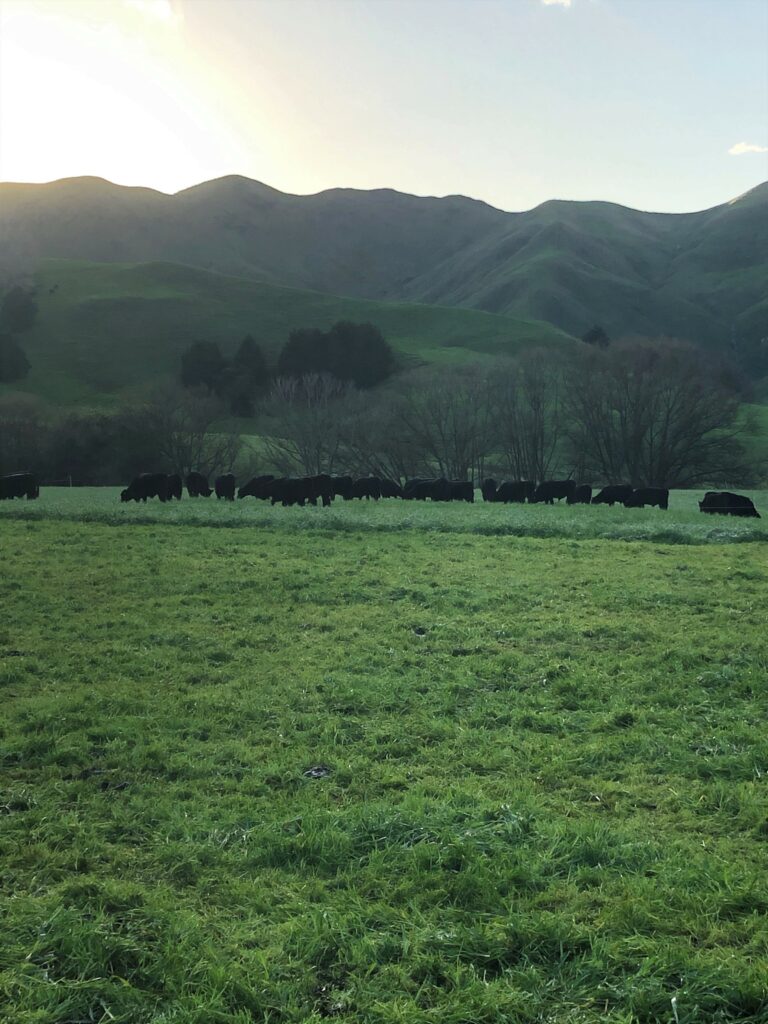
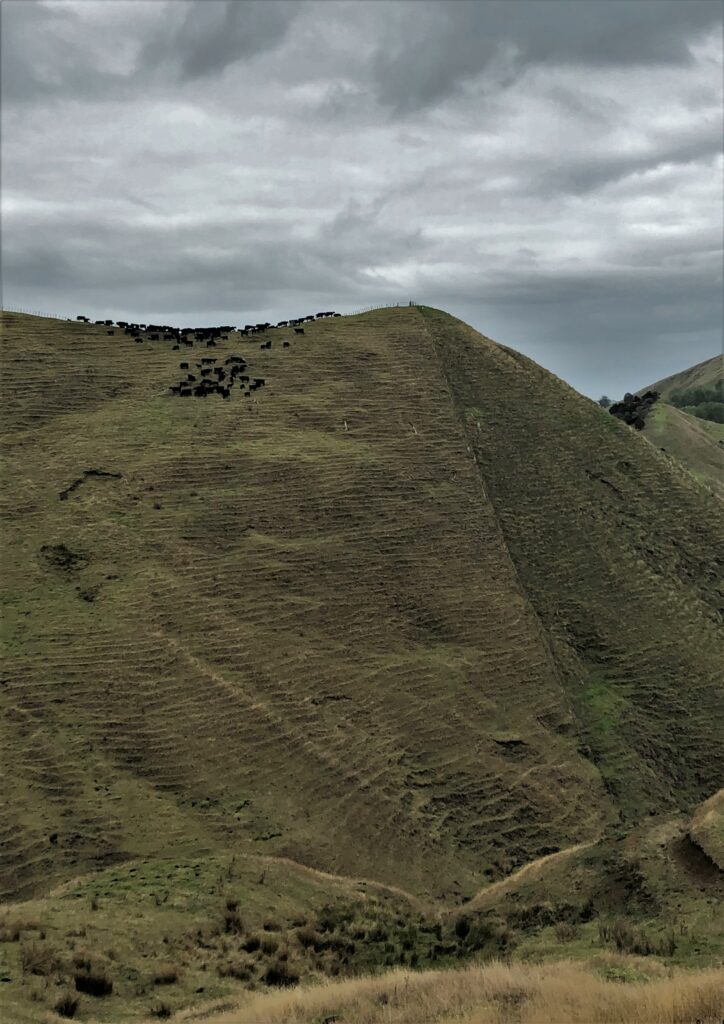
One of the early sires of influence used in the Matauri herd goes back to Te Karaka Angus, a bull bred in the 1950s which in a serendipitous coincidence was bred on the property the stud now calls home.
Outside the herd and under the stewardship of the Maxwell family, Matauri Black Banner, born in 1966, was the first widely used Matauri sire. A son of Black Banner was then exported to Western Australia – the first of many sires to be exported from the Matauri stable.
In more recent history, Matauri Reality 839 is a sire most NZ Angus breeders will be familiar with – being a bull to have received much adoration and used widely throughout the country.
Reality 839 was one of the first curve bending bulls for BW, CE, and high growth rates.
“He was kind of a freak. He was out of a two-year-old heifer and by an unproven sire, but Colin recognized he had something special early on. Reality went on to be one of the most widely used sires in Australasia – he has just shy of 6000 registered progeny throughout Australia and New Zealand,” says Travis.
He was also the most used AI sire in Australia in 2017. And while getting on he is still alive at home on Colin Maxwell’s property.
“We were really lucky to come across the stud and be able to purchase it,” he says.
MEETING THE NEEDS OF CLIENTS – AN IMPORTANT PART OF THE MATAURI MARKETING PLAN
Having only taken possession of the stud a year ago, genetic marketing of cattle is new to the team.
Travis says relationships are key and despite it being early days in their ownership of the stud, he has been taking the time to meet new and existing contacts and keep them informed of developments with the herd.
In his former role, Travis purchased bulls from Colin Maxwell so is familiar with many of the studs existing clients and is working to continue those relationships.
James says they’ll engage with Matauri’s clients and find out what they want and continue to meet those needs.
“Strengthening the relationships with existing clients is important to making sure we continue to make a difference to clients’ businesses,” says James.
The Parsons and Pymms will be hosting their first on-farm rising two-year-old bull sale this winter and hosted a yearling sale late spring. That yearling sale in 2021 saw an average price of $4,500 for 15 sires offered.
“With our late calving, it can be hard to grow the younger bulls out, coming off the hard hills for the yearling sale,” says James.
Their first yearling sale fell during a Covid-19 lockdown so they used Bidr as an online option for the auction. This year’s sales will be held on farm – the rising two-year-old sale on July 6th and the yearling sale on September 20th, 2022.
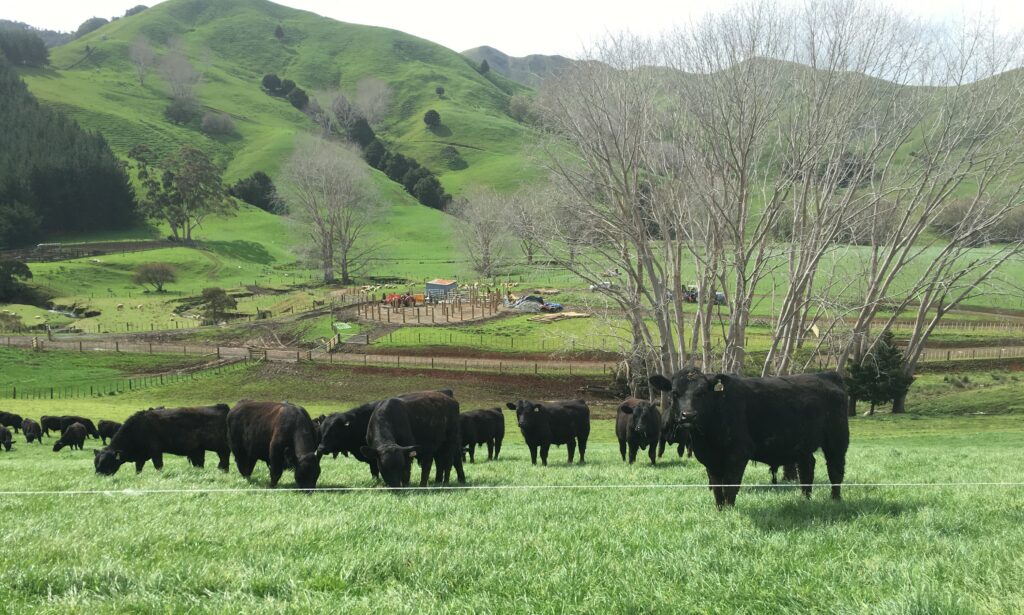
The business is also running a Facebook page which they are working hard to keep up to date with timely content and videos as well as websites.
A YEAR ON HARD NORTHLAND HILL COUNTRY
The hard hill country is the biggest challenge the Pymm and Parsons families face.
Northland summers can be tough and unpredictable on the steep hill country and while the soil type dries out quickly, it winters well.
“That’s probably it’s strong point,” says Travis.
“We have really strong soil and the previous property owners had planted poplars and willows on the slipping faces – they were forward thinking,” says Travis.
He said the property is long and narrow with a race running down the centre which allows for ease of stock movement with a good team of dogs – a great asset given the terrain of the property.
Mating and AI begins in late November but Travis and James have identified the potential to bring the calving date forward to suit the shift in location made by the stud last year. Travis says using AI will help make that transition.


At the same time the ewes are being shorn, lambs weaned, and ram deliveries from the Ashgrove ram sale in mid-November.
“It’s a labour-intensive time on the property,” says Travis.
In early January ewes are culled and later in the month the bulls come in having followed up the AI programme and completed their natural mating service. The ram goes out in mid-March.
Calves are weaned in March or April depending on the season. Travis says they don’t have targeted weaning weights, preferring to have a fresh pick of grass for the calves to be weaned onto, an aspect they find more important than weights.
“High quality feed after weaning is important but with unpredictable summers it’s hard to put a date on that.”
Following weaning the cows run as a single mob on the hills throughout autumn and winter on clean up duty.
Coopworths, Suftex, and Romworth all contribute to the sheep component of the business. The Hard Hill Country Genetics.Com Coopworth flock are proudly FE Gold.
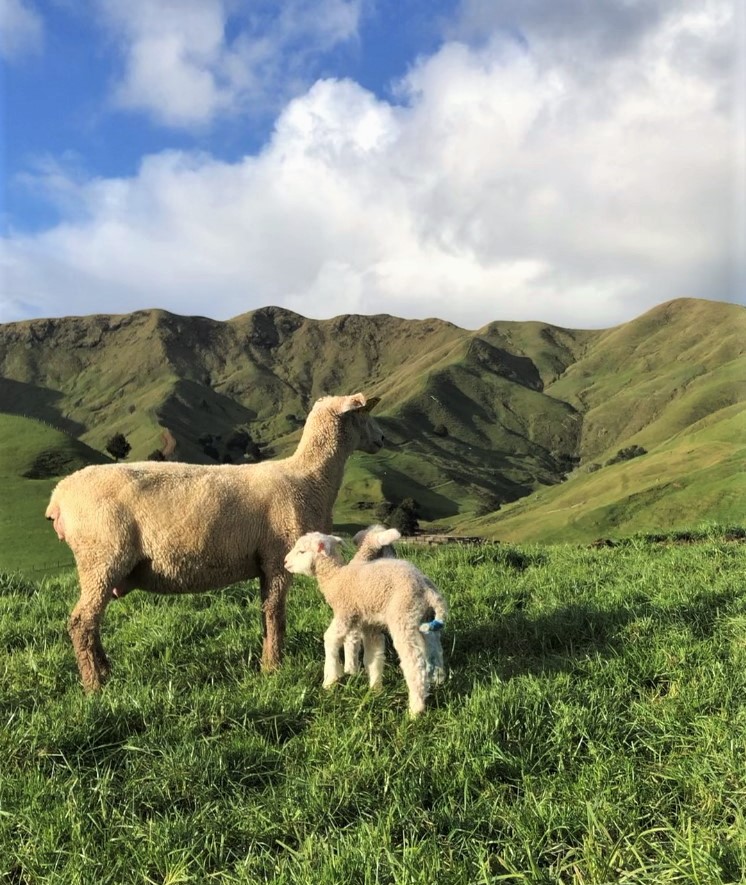
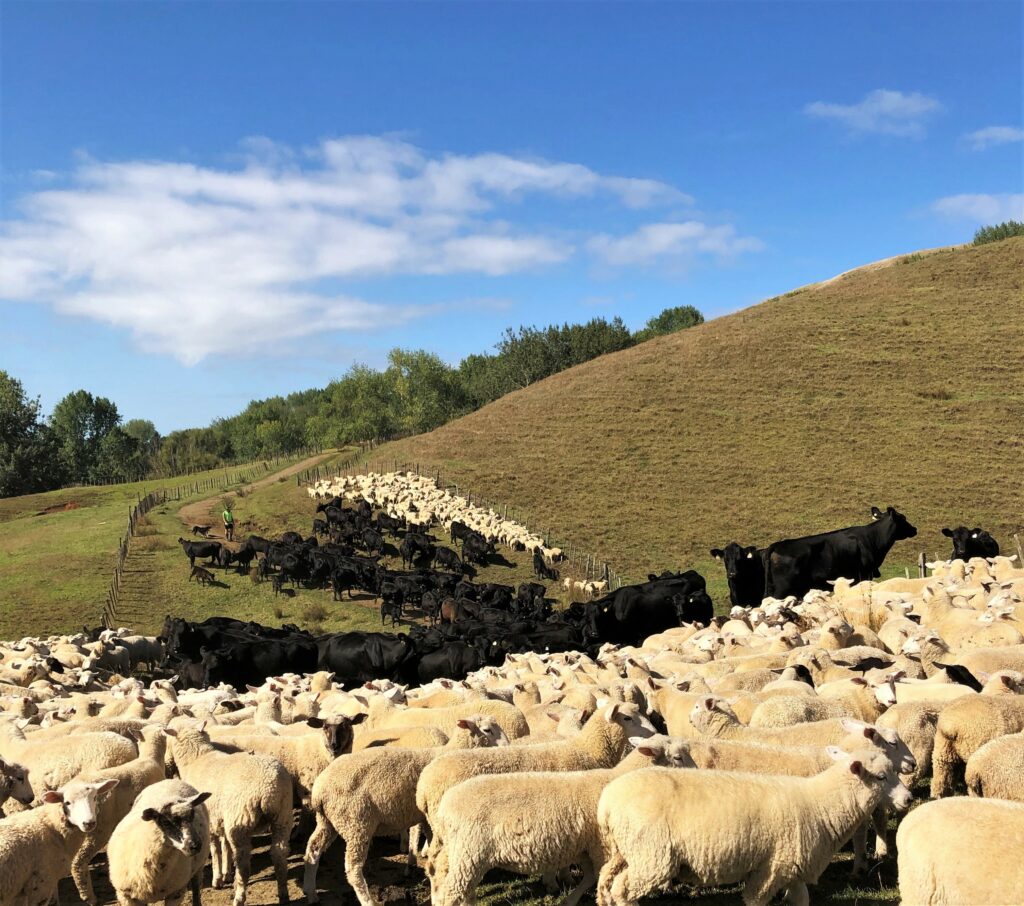
Being part of the FE Gold group is one of the main drivers for the sheep enterprise. FE (facial eczema) is an animal health challenge on the property. The FE Gold status is complimented by the flock also being selected for worm resistance.
All sheep sires have been dosed with 0.6mg of sporidesmin/kgLW for the past 17 years with breeding over the years now meaning the business has some of the most FE resilient sheep in the country.
Travis says they select sheep for their FE resistance, worm resistance and fly strike resistance and he says some of those low input philosophies are being carried over into the cattle. Couple that with longevity, with some stud ewes up to 10 years of age.
“We only drench the cattle when we have too. We’re trying to breed tougher, easier care animals.”
James and Travis both feel strongly that stud stock should be put under pressure to see which ones perform.
“We put our stud animals under pressure on exceptionally steep hard hill country to find the best performers so our clients don’t have too,” says Travis.
Fecal egg counts allow the team to monitor the worm burden in the young stock.
“If we don’t see raised egg counts in the young stock for three months, we don’t see the need to drench them in that time. We already see a small number of animals that have never had a raised FEC. If we monitor, record and select for it over time we may reach the point where we may not have to ever drench,” says Travis.
On average the ewes pregnancy scan 200% in lamb and record a lambing tally of between 160-170% depending on the season.
“Lambs can pick up disease quicker in the warm and wet environment up here, but we do also get cold southerly’s blowing through. All the ewes are vaccinated.”
All the sheep flocks are fully recorded on SiL, and as is with the cattle, structural soundness is a firm focus.
The commercial and stud ewes run as one mob through winter and are drafted into mobs prior to lambing.
Lambing starts on August 10th to fit in around calving.
“There’s a couple of weeks, with calving and lambing overlapping which can be quite busy,” says Travis with a chuckle.
Rams are sold in mid-November with an on-farm auction – 100 rams are offered.
Pasture renewal is carried out on the limited cultivatable land available – annual grasses are sown in conjunction with strategic Nitrogen use.
Crops will be planted if they can be sown early enough and then fed to young stock. Cows don’t receive any supplementary feed.
Travis says the business carries quite a few young stock (sheep and beef) which are grown out on the hills, a different practice to many other dry stock businesses.
He said spring 2021 was kind so they were able to send some commercial lambs away off the ewe while the stud lambs are carried through and the rams sold as two-tooths. Ewe replacements are selected in January as two-tooths.
Travis says prior to buying the Matauri Stud, they ran a 110ha cell grazing system on the hills throughout winter, which he credits for allowing them to carry and grow out the young stock.
“It was a lot of walking up and down hills, but it was effective.”
ENVIRONMENTAL STEWARDSHIP A KEY PART OF THE BUSINESS
Environmental stewardship is an important ethos to the business.
To date 4km of waterways have been fenced off and riparian planted with more scheduled. Fencing off and retiring of bush areas is also occurring.
Travis and James agree they are thankful for the poplar planting that was done by the previous owners and it’s a task they are continuing with to improve hillside stability on a recently purchased neighbouring block of 120ha.
“The home farm was well planted but we’ll continue it on the new block,” says James.
Sediment settling ponds are being investigated for use on-farm, and while James says it’s early days, they are certainly an addition being given serious thought.
He says they were also one of 10 Super Air demonstration farms for SpreadSmart technology.
SpreadSmart is precision fertiliser placement for aerial top-dressing at variable rates, it combines GPS guidance in conjunction with digital farm maps so specific areas are targeted, reducing nutrients entering waterways and areas it’s not needed.
James says their sustainability ethos reaches beyond solely caring for the land and their practices are extended to their livestock.
“It’s the second year the ewes haven’t been dipped, the Coopworth flock is FE Gold and improving worm resistance.”
“The less chemicals farmers have to use – dip, drench and zinc – the more sustainable the livestock are.”
They also plan to measure methane outputs from their sheep this year.
Following the purchase of the Matauri stud and a 120ha neighbouring block in the past year, both men agree it’s now time for consolidation.
“We’re excited about the future. It’s nice to farm quality animals and genetics,” says James.
With such a busy operation it’s only natural there is a team making it all happen.
Hard Hill Country Genetics.Com is owned by the Parsons family – James and his wife Janine and James’ brother Chris and his wife Hayley with Travis and Kirra becoming shareholders in 2021. Business governance is handled by a board, chaired by Chris. Travis and James are joined on the board by two independent board members.
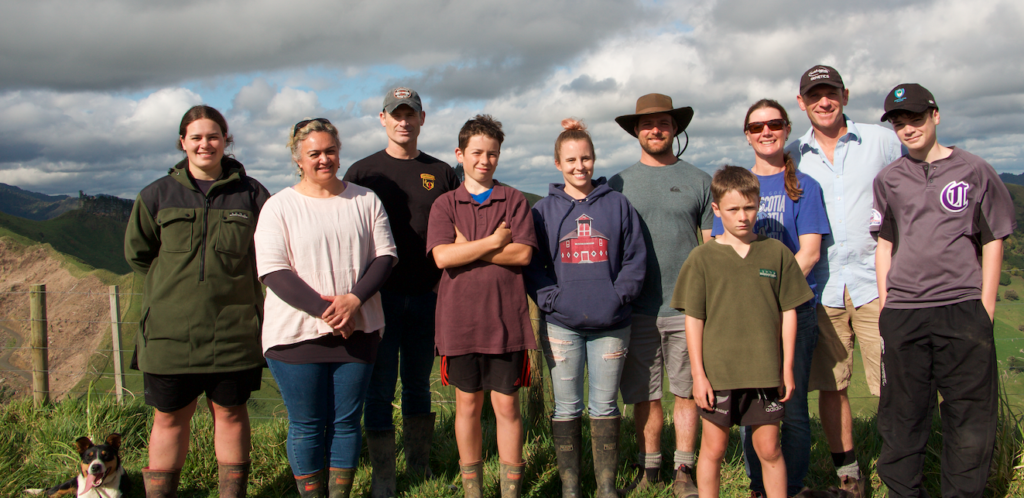
They employ a full-time shepherd, and full-time fencer-general hand with Travis and Kirra taking care of the day-to-day management. James considers himself part-time on farm also undertaking consultancy work off-farm and some board governance roles. They’re backed up by family who all help at peak times of the year.
To find out more:
Like them on Facebook.com/matauriangus
www.hardhillcountrygenetics.com
Words by Natalie Campbell.

